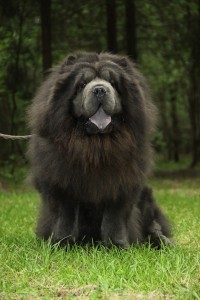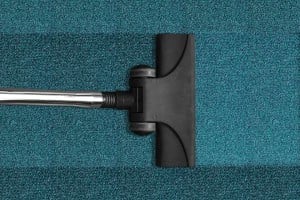There is nothing better than coming home from a long day at work and being greeted by a wagging tail and smiling puppy face, similar to the ones on the labrador retriever breeders in Alberta, or the purr of a kitty. However, pet hair can cause many families issues, from little things like fur getting on clothes and furniture to big things like causing asthma or triggering allergies.
 As many as three out of ten people are affected by pet allergies. The dander, fur, and sometimes saliva can cause people to have problems breathing, experience hives, or itchy eyes. While some people have sensitivities to different breeds, there is no such thing as a truly hypoallergenic dog or cat. In fact, allergies to cats are more predominant than dogs – even the hairless types. This is why getting rid of pet dander is so important.
As many as three out of ten people are affected by pet allergies. The dander, fur, and sometimes saliva can cause people to have problems breathing, experience hives, or itchy eyes. While some people have sensitivities to different breeds, there is no such thing as a truly hypoallergenic dog or cat. In fact, allergies to cats are more predominant than dogs – even the hairless types. This is why getting rid of pet dander is so important.
No one wants to get rid of the family pet and, thankfully, there are steps you can take to reduce the triggers for family members that may have reactions. Washing your pet frequently can help reduce the dander and fur floating around the house. Not to mention, if your pet spends a fair amount of time outside, they may bring allergens in from outdoors. Also, vacuuming 3-4 times per week can significantly reduce allergy triggers.
How hard can it be to incorporate a little extra vacuuming?
 You would be surprised at the amount of pet fur that will still be clinging to your carpet after a regular vacuum. It is insane, especially if the fur is the fine, silky type of fur often found on the sweetest of kitties. In order to really pick up fur, you need to figure out what you are vacuuming up, how much suction is needed, and what type of pet hair vacuum attachments will work best for you. Learn how to remove pet hair and dander below.
You would be surprised at the amount of pet fur that will still be clinging to your carpet after a regular vacuum. It is insane, especially if the fur is the fine, silky type of fur often found on the sweetest of kitties. In order to really pick up fur, you need to figure out what you are vacuuming up, how much suction is needed, and what type of pet hair vacuum attachments will work best for you. Learn how to remove pet hair and dander below.
If you have a long-haired pet, it can be easier to get the fur up because at least you can see it! Sometimes the short-haired dogs and cats can create more layers of fur on your carpet, but because the fur is small and fine, you can barely see it until it is a huge problem. Then there is the challenge of getting the pet hair sucked up without clogging your vacuum. There are many people who have special bent coat hangers for such occasions.
That’s where the type of vacuum and the attachments come in handy. For a home with a pet that is a known shedder, you can’t survive with just any kind of vacuum. The Miele U1 Cat and Dog Vacuum has a 12 amp, 1200 watt motor, which provides significant suction and is one of the best available on the market.
 Like most pet vacuums, it comes with attachments that include brushes which are great to loosen pet hair from carpet and upholstery. You can also add the Miele STB Handheld Turbobrush, which is powered by the suction of the vacuum, making it a powerful tool ideal for small, hard to reach places. These attachments are critical for getting the pet fur and ground-in dander out of the carpet, and preventing allergy and asthma attacks. Using ones that have rotating brushes like the Miele STB is the best option, because they get almost every bit of hair and dander out of your home.
Like most pet vacuums, it comes with attachments that include brushes which are great to loosen pet hair from carpet and upholstery. You can also add the Miele STB Handheld Turbobrush, which is powered by the suction of the vacuum, making it a powerful tool ideal for small, hard to reach places. These attachments are critical for getting the pet fur and ground-in dander out of the carpet, and preventing allergy and asthma attacks. Using ones that have rotating brushes like the Miele STB is the best option, because they get almost every bit of hair and dander out of your home.
The checklist for a great vacuum includes excellent suction power, attachments with brushes and rotating heads, and maneuverability. Pet hair can collect in the corners of your home and, if your vacuum has limited rotation or capabilities to get into the corners and under furniture, there is no point in purchasing that brand. It may cost you a little extra, but having a top of the line pet vacuum is worth its weight in gold.
No matter what extra work is required to keep your home clean and free of allergy triggers, it is worth it to have the unconditional love of your pet each and every day.
